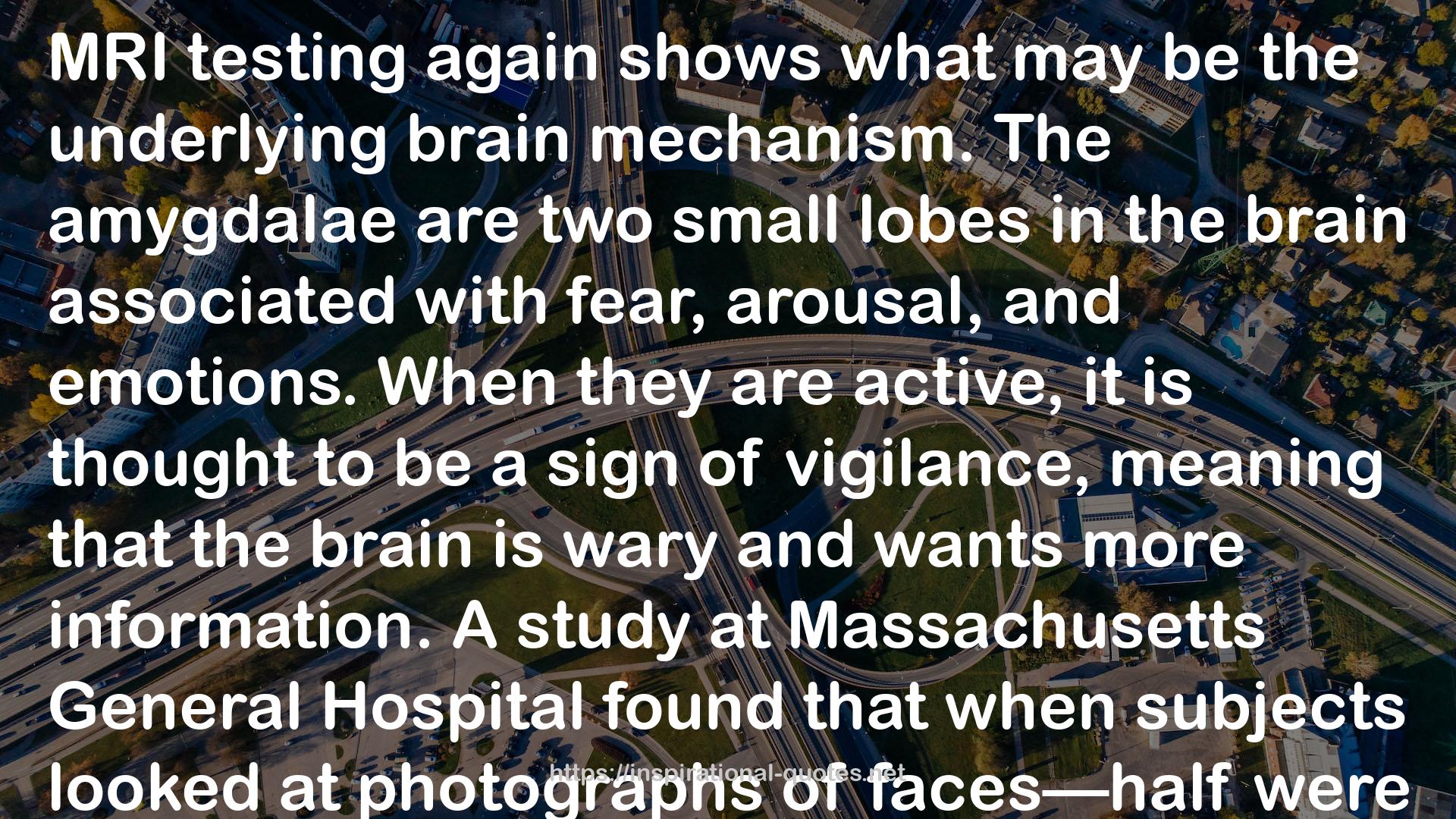" MRI testing again shows what may be the underlying brain mechanism. The amygdalae are two small lobes in the brain associated with fear, arousal, and emotions. When they are active, it is thought to be a sign of vigilance, meaning that the brain is wary and wants more information. A study at Massachusetts General Hospital found that when subjects looked at photographs of faces—half were white, half were black—MRI scans found high amygdala activity. This was considered to be a normal reaction to unfamiliar faces. When the subjects looked at the photographs a second time the faces were more familiar; only the other-race faces continued to provoke high amygdala activity. This was true for both blacks and whites, suggesting that encounters with people of different races keep the brain at a higher level of watchfulness.
Amygdalae notice race even when a person does not. William A. Cunningham of Ohio State University showed white subjects pictures of faces for only 30 milliseconds—not long enough for the subjects to be conscious of them—but black faces triggered greater amygdala activity than white faces. When he showed faces for a half a second—long enough for people to notice race—he found that black faces prompted greater activity in the pre-frontal areas, a part of the brain associated with detecting internal conflicts and controlling conscious behavior. This suggested the subjects were trying to suppress certain feelings about blacks.
Steven Neuberg of Arizona State University attributes instinctive bias to evolution during our hunter-gatherer past. “By nature, people are group-living animals—a strategy that enhances individual survival and leads to what we might call a ‘tribal psychology’, ” he says. “It was adaptive for our ancestors to be attuned to those outside the group who posed threats such as to physical security, health or economic resources. "
― Jared Taylor , White Identity: Racial Consciousness in the 21st Century
